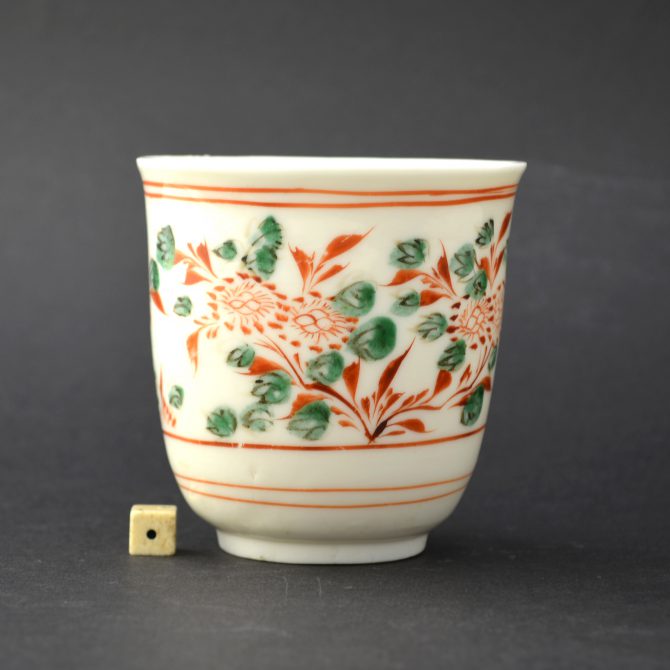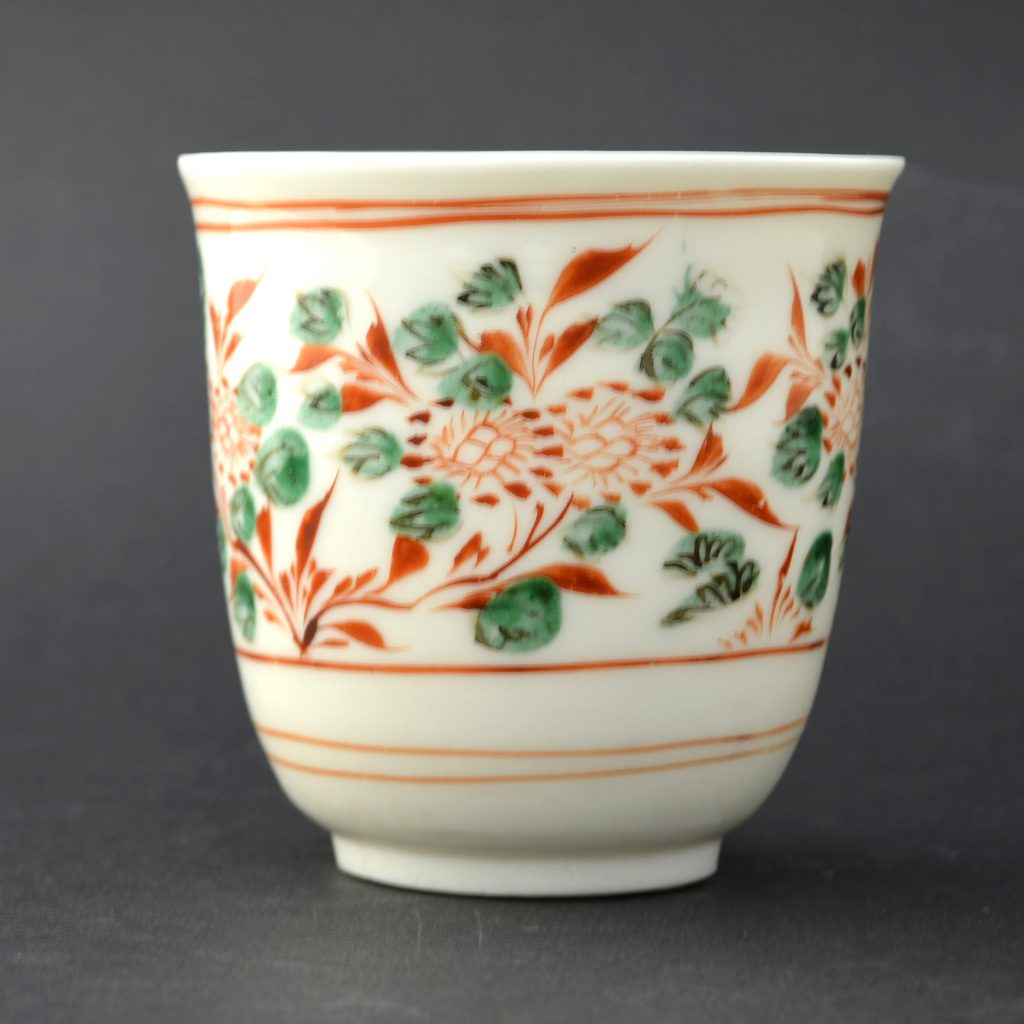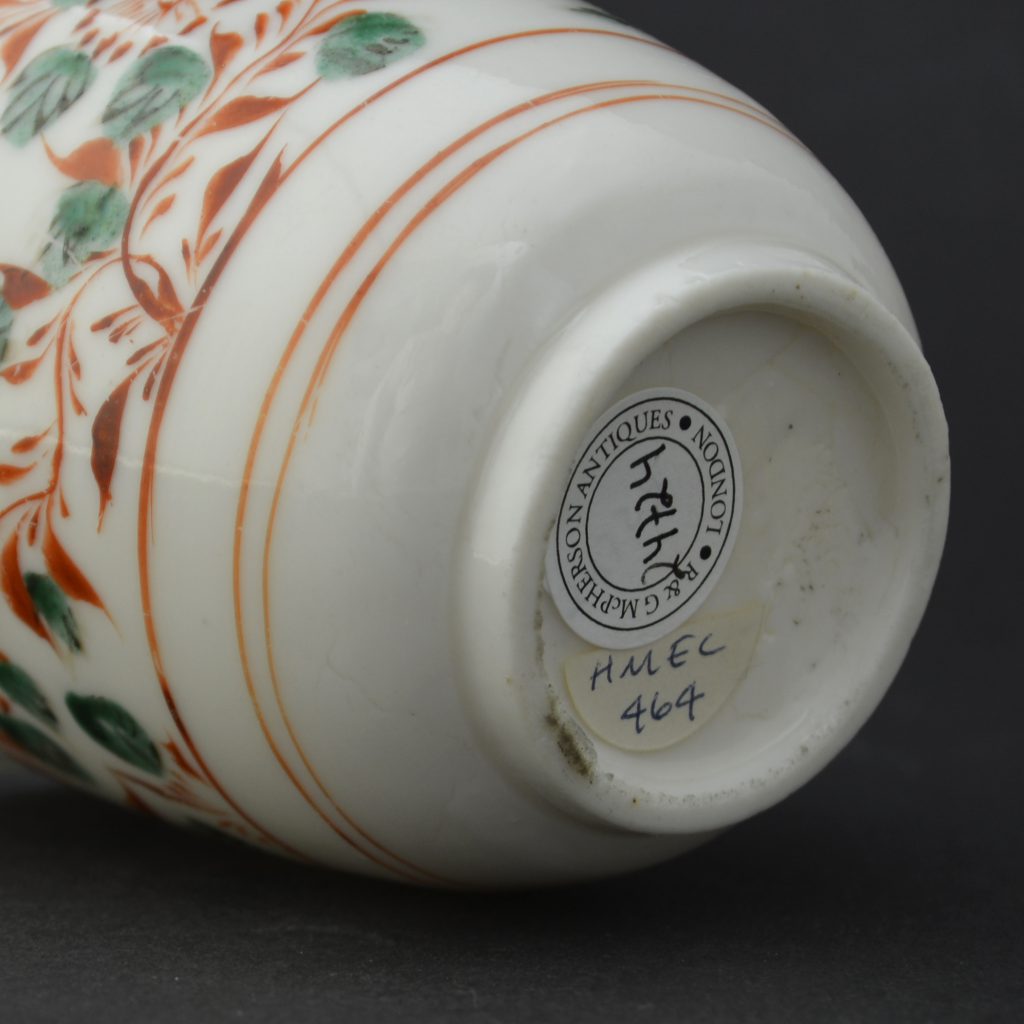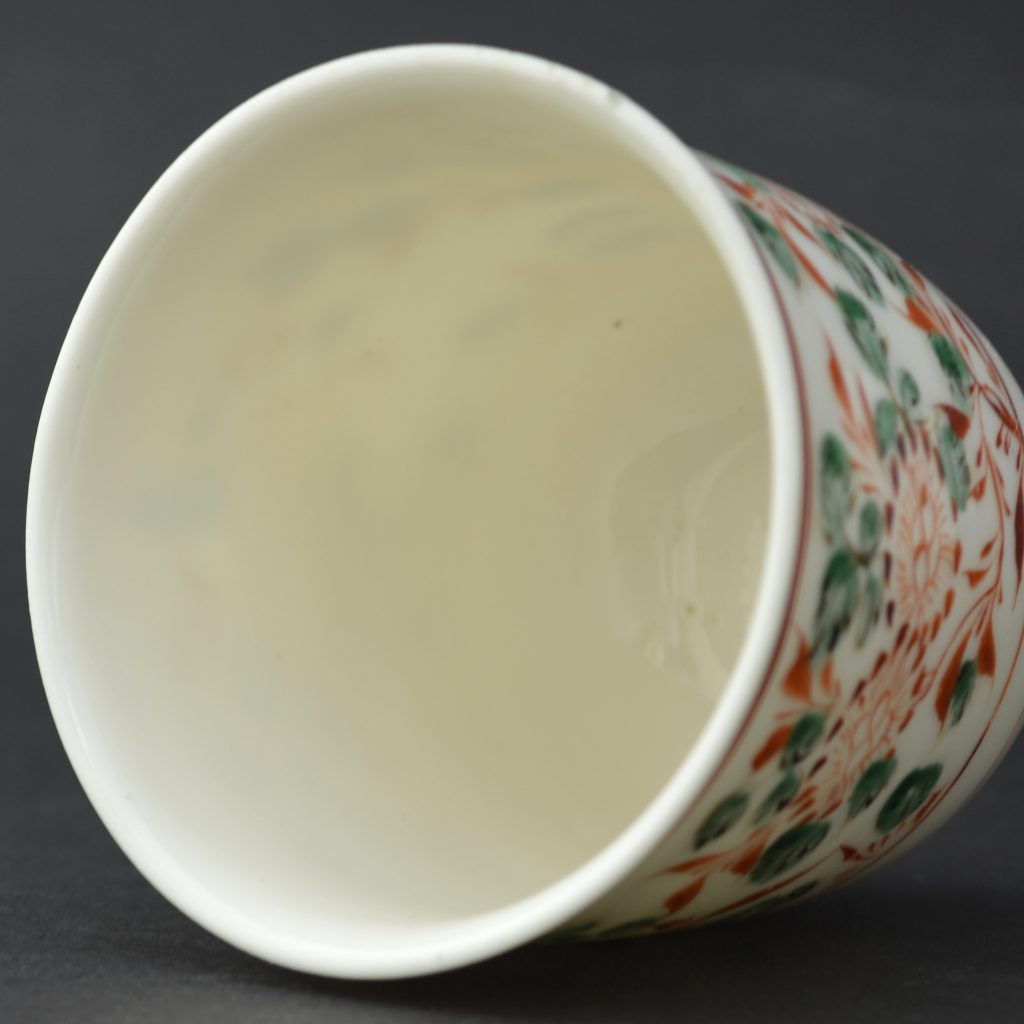
A Rare Chinese Decorated 17th Century Blanc De Chine Beaker
A rare 17th century Blanc de Chine porcelain beaker from a kiln in Dehua, Fujian province. Enamelled in Fujian province using typical so-called Swatow coloured enamels.
SOLD
- Condition
- In perfect condition with especially clear and un-rubbed enamels.
- Size
- Height : 7.5 cm (3 inches)
- Provenance
- Sotheby's London, 7th December 1995, lot 185. The Helen Espir Collection of European Decorated Chinese Export Porcelain : "a member of the Oriental Ceramic Society and collector, with her husband. Having made a typical collection of Song and provincial Ming blue and white, they decided to concentrate on what used to be called `clobbered` porcelain. She is the author of the standard work on the subject, European Decoration on Oriental Porcelain,2005, the first to examine the work of European decorators on Chinese porcelain throughout the eighteenth and nineteenth centuries, focusing on enamellers in Holland, Germany and England. She has learned Chinese." From Provenance ; Collectors, Dealers & Scholars : Chinese Ceramics in Britain & America (Roy Davids, Dominic Jellinek, Privately Printed, 2011. ISBN 978-0-9570148-0-0).
- Stock number
- 24724
Information
Chinese Enamel Decorated Blanc de Chine Porcelain :
According to Kerr and Ayers (1). "Evidence of enamelling undertaken by Dehua potters is so far limited to Chinese records of the potters Zeng Maodou and Zeng Dachou who apparently specialised in this technique during the Jiajing period (1522-1566)". However most pieces of enamelled Blanc de Chine herald from a later generation. Kerr and Ayers go on to describe the similarities between the enamel work on Zhangzhou (Swatow) wares and Blanc de Chine produced at Dehua. To my eye the free use of a wet brush, large blocks of vibrant colour and the colour scheme itself, especially the use of turquoise over black, together with the themes attempted are really so similar it seems difficult to believe that the painting wasn`t done at the same place. It would be logical that most, if not all, of the decorated Blanc de Chine porcelain was enamelled at Zhangzhou, because of the very rare occurrence of enamel on Blanc de Chine porcelain compared to the large amount of enamel decoration on (Swatow) ware from Zhangzhou. However, it is possible enamellers from Zhangzhou travelled to Dehua in search of work. Clearly further research is needed. 1) : Blanc de Chine, Porcelain From Dehua, A Catalogue of the Hickley Collection by Rose Kerr & John Ayres, Art Media Resources Ltd 2002.



